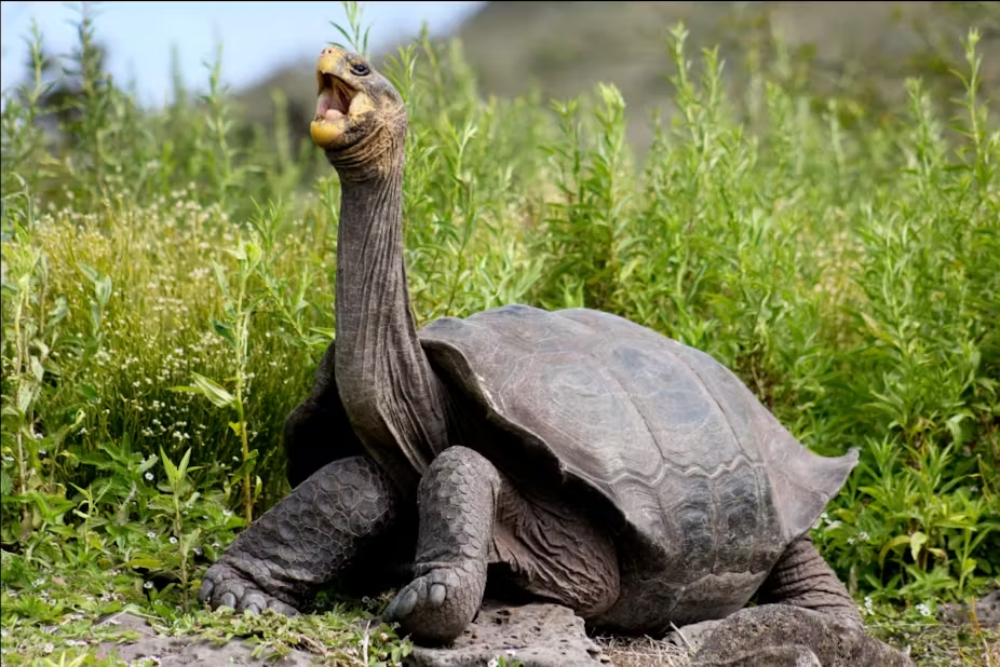Nestled in the remote reaches of the Pacific Ocean, the Galápagos Islands boast an otherworldly landscape, teeming with unique biodiversity. Among its most iconic inhabitants is the Galápagos tortoise, a species that has captured the imagination of scientists and also nature enthusiasts alike for centuries. These magnificent creatures, with their imposing size and remarkable longevity, serve as living relics of evolutionary history, offering invaluable insights into the dynamics of adaptation and survival in one of the world’s most challenging environments.
Evolutionary Origins
The Galápagos tortoise, scientifically known as Chelonoidis nigra, holds the distinction of being the largest living tortoise species on Earth. Belonging to the Testudinidae family, these gentle giants are believed to have evolved from South American tortoises that drifted to the Galápagos Islands millions of years ago, carried by ocean currents. Over time, isolated from mainland populations, these ancestral tortoises underwent a process of adaptive radiation, diversifying into distinct subspecies across the archipelago’s varied habitats.

Distinctive Features
One of the most striking features of the Galápagos tortoise is its impressive size. Adult specimens can weigh over 900 pounds (400 kilograms) and measure up to five feet (1.5 meters) in length, making them the largest tortoises in the world. Their domed shells, composed of bone and covered in thick, keratinized plates, provide protection from predators and serve as reservoirs for water and nutrients during times of scarcity.
Adaptations for Island Life
Life on the Galápagos Islands presents unique challenges, from harsh climatic conditions to limited food resources. To thrive in this unforgiving environment, Galápagos tortoises have evolved a suite of remarkable adaptations. Their long necks and specialized beaks enable them to reach vegetation at varying heights, allowing them to exploit a wide range of food sources. Additionally, their ability to survive extended periods without food or water has enabled them to endure the islands’ unpredictable weather patterns and seasonal fluctuations.
Ecological Importance
As keystone species within the Galápagos ecosystem, tortoises play a crucial role in shaping their environment. Through their grazing habits, they help maintain the delicate balance of plant communities, preventing the dominance of certain species and promoting biodiversity. Furthermore, their burrows provide shelter for a myriad of other species, including reptiles, birds, and invertebrates, thereby influencing the structure and composition of island ecosystems.
Conservation Challenges
Despite their resilience and adaptability, Galápagos tortoises face numerous threats to their survival. Historically, they were hunted for their meat and oil by sailors and whalers, leading to the decimation of populations on several islands. Habitat destruction, competition with invasive species, and the introduction of diseases by non-native animals have further exacerbated their plight. Today, conservation efforts led by organizations such as the Galápagos National Park Directorate and the Charles Darwin Foundation are working tirelessly to protect and restore tortoise populations through habitat restoration, captive breeding programs, and invasive species management.
Symbol of Conservation Success
The story of the Galápagos tortoise serves as a powerful testament to the impact of conservation interventions. Through targeted conservation efforts, several subspecies once on the brink of extinction have experienced remarkable recoveries. The restoration of tortoise populations not only preserves a unique emblem of evolutionary history but also helps safeguard the integrity of the entire Galápagos ecosystem for future generations.
Conclusion
In a world grappling with unprecedented environmental challenges, the Galápagos tortoise stands as a symbol of resilience, adaptation, and the enduring power of conservation. So, as stewards of our planet, it is incumbent upon us to continue our efforts to protect and preserve these ancient giants, ensuring that they remain a living testament to the awe-inspiring beauty and diversity of life on Earth’s most remarkable archipelago.









